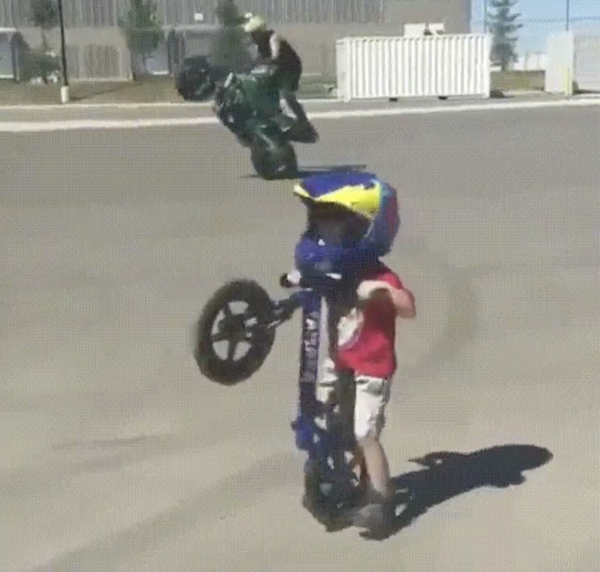Review: Ron Haslam Race School Premier Experience
I put my track skills to the test at Donington Park
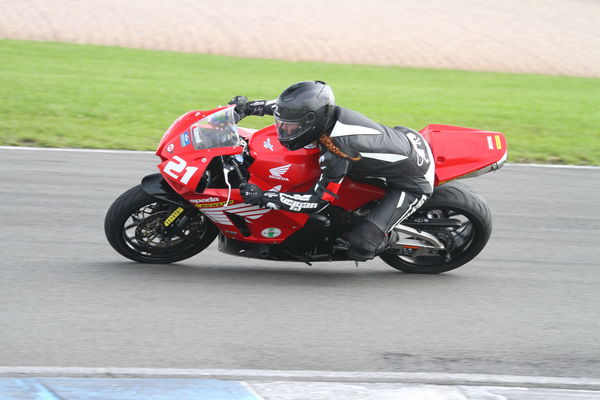
HASLAM. The name is synonymous with motorcycle racing, and despite having long retired his racing boots World Champion Ron still plays a very active role in motorcycling.
In conjunction with Honda, the 61-year-old runs the Ron Haslam Race School, taking over Leicestershire’s Donington Park more than a dozen times a year to teach motorcyclists the tricks of his trade.
Thousands of riders have passed through the doors of the school since its inception two decades ago, with Ron and his handpicked gaggle of instructors teaching them how to ride both faster, and safer.

The school offers three experiences comprising On-track, Premier and Elite. On-track caters for novices from age 12, giving them access to a fleet of CBR125s, CBR300Rs, CB500s and CBR500s, age-dependant.
Premier gives more experienced riders in-depth instruction aboard Honda’s now-discontinued CBR600RR, while Elite – available to only those who have completed the previous level – sees riders graduate on to the revered Fireblade.
Back one chilly autumnal morning I visited Donington and joined instructor Nick on the Premier experience.
As we began the day by signing-on and kitting up, there was an excited buzz coming from the bikers sat in the welcome hall, drowned out sporadically by the roar of a superbike flying around the 2.5-mile track.
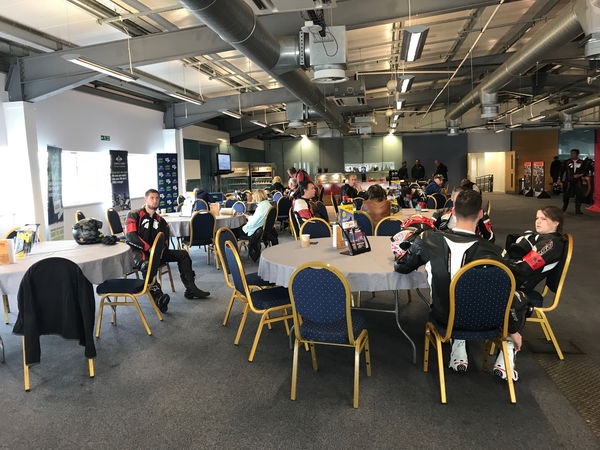
Soon enough, my Premier group was called into a trackside briefing classroom, where a biography of Donington Park was given, before cones, flags and other rules were explained. Unlike those on the Elite experience, for many of the participants it was to be their first time on track and a few choice jokes from the lecturer served to calm our nerves.
CLICK NEXT TO CONTINUE READING THE REVIEW
As we assembled in the pit garage, pit lane manager Colin introduced us to the bikes – mine was no. 21– and our instructors, who were for the most part either current or ex-racers.
The first instruction was simple: we were to keep our eyes forward and concern ourselves only with riding – they would take care of when we were to overtake/be overtaken.
As we nervously headed out on track – two riders to each instructor – this tactic proved invaluable. By allowing us to concentrate on only piloting the machine around the circuit, we soon got to grips with the 118hp bike and the predominantly right-handed track. We gained confidence in the powerful brakes and the failsafe ABS and were soon bouncing off the limiter in second gear on the straights.
Then came the chequered flag, and the 15 minutes of session one were over.
Nick immediately enquired how we’d thought it had gone, before giving his own advice. I needed to relax and loosen up, he said. At present I was as stiff as the CBR’s aluminium frame, which would only make steering difficult and would quickly lead to fatigue.
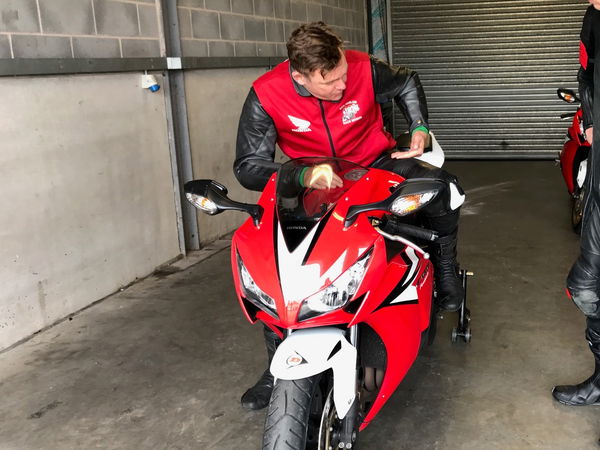
Climbing aboard a stationary bike, he demonstrated the ideal body position, and gave us advice on the lines to take when turning into the apex.
The improvement was apparent as soon as we headed back out on track for our second session. Instead of following Nick’s tyres, we were looking for the red cone, braking, then turning in at the yellow and chasing the green-coned apex. I had relaxed, and no longer felt like I was wrestling an unruly lump of metal.
We were riding faster and smoother and Nick – who often rode one-handed on his VFR, peering backward over his shoulder at us – increased the pace marginally each lap, pushing and encouraging us, but also acknowledging our weak points and slowing down.
Impressively, he remembered these shortfalls, and addressed them in the next briefing. The ‘Old Hairpin’ and ‘Goddards’ were two of my weak points – the latter for its sharp right, and the former for it’s tight, banked nature. Gearing and positioning were my problems, Nick decided – I needed to take a wider line in and drop a gear.
Back out on track for the final session and I adjusted accordingly. Nick was right. With a wider entry line and in a lower gear, both corners seemed a breeze. By now, I was flying down the Dunlop and Wheatcroft straights on the redline in third, and maintaining high revs in second for the rest of the circuit. It felt great to push both myself and such a powerful bike to the limit.
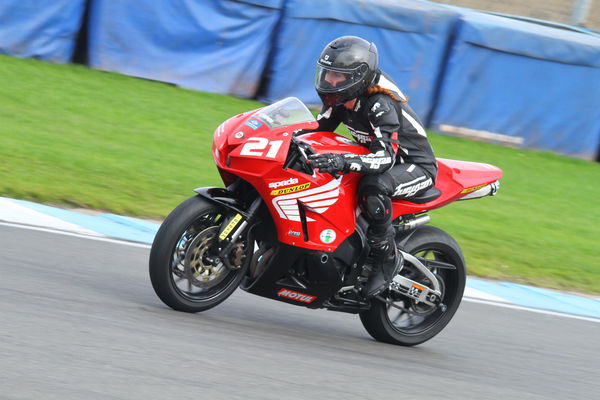
I was tailing Nick as we entered bends, and revving the bike to keep up with him on the straights. He seemed to know my limits and pushed me to flirt dangerously with them – on a couple of occasions I felt the bike wobble beneath me.
It was with a sigh, and one of relief from my aching muscles, that the chequered flag came out and we filed back into the pits. I was exhilarated, but disappointed that all 45 minutes of track time were over.
As we walked away from the bikes, Nick gave his own assessment of my ride. He was impressed with my increased pace, he said, but thought I was leaning the bike too far into bends. Next time I had the chance to ride on track, he suggested I concentrate on getting more of my body off the bike while chasing that elusive knee down.
A debrief concluded the experience, and prizes were handed out, followed by scored certificates for every rider – mine read 87.5 per cent.
I was impressed by the whole experience, and rightly so. At £299, each minute on track equated to £6.64. But the course was so much more than just 45 minutes on track. The supportive atmosphere quashed nerves from the off, before the quality individual teaching and group briefings ensured all riders got the most out of every second on track.
